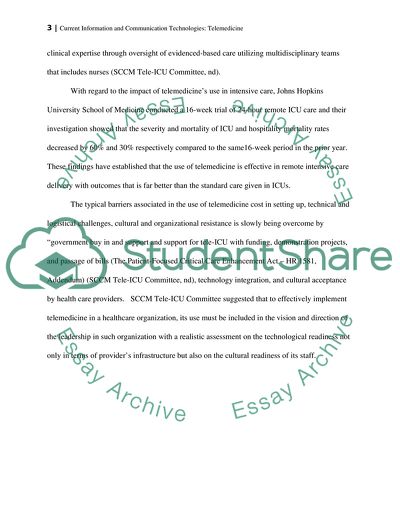Current Information and Communication Technologies Research Paper. https://studentshare.org/medical-science/1791522-current-information-and-communication-technologies-telemedicine
Current Information and Communication Technologies Research Paper. https://studentshare.org/medical-science/1791522-current-information-and-communication-technologies-telemedicine.


